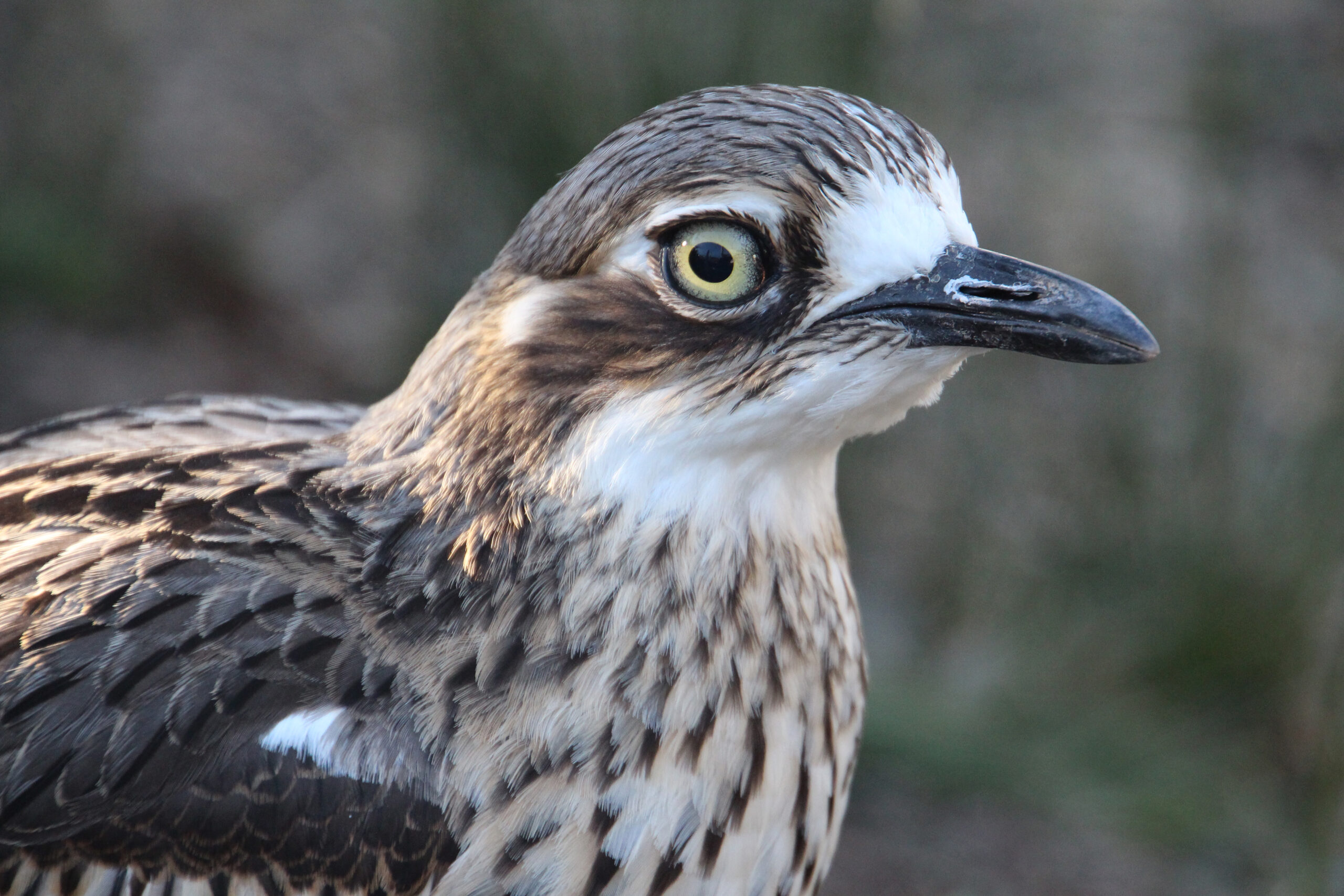| Common name | Water-holding frog |
| Scientific name | Cyclorana platycephala, Cyclorana occidentalis |
| Type | Amphibian |
| Diet | Insects, aquatic arthropods, and even other frogs |
| Average lifespan | Unknown, but can live for up to five years underground |
| Size | 66mm in length and weighing 80g |
Considered one of the freakiest frogs of Australia, the water-holding frog can spend years in a hibernation-like state buried deep underground. With a super-sized bladder capable of holding water for up to five years whilst buried below the surface, the water-holding frog was also considered a nutritious and hydrating snack by Australia’s First Nations people traveling through the desert.
Ranging in colour from olive and dull grey to dark brown, water-holding frogs have thick bodies usually with a whitish under belly. The variety of colourations provide the frogs with an effective camouflage coat to protect them against predators such as snakes, monitor lizards, and birds as they wallow in streams, ponds, and clay pans.
This frog has a flat head with small eyes and smooth upper skin that is dappled with a few low warts. The water-holding frog has fully webbed toes and a small ridge on the underside of its back feet called a metatarsal tubercle which is used as a spade to dig.
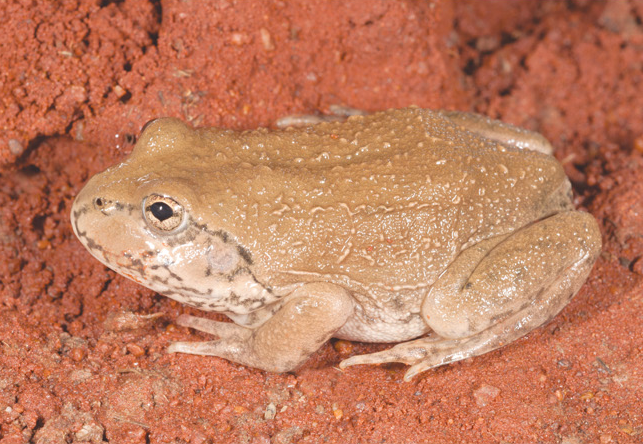
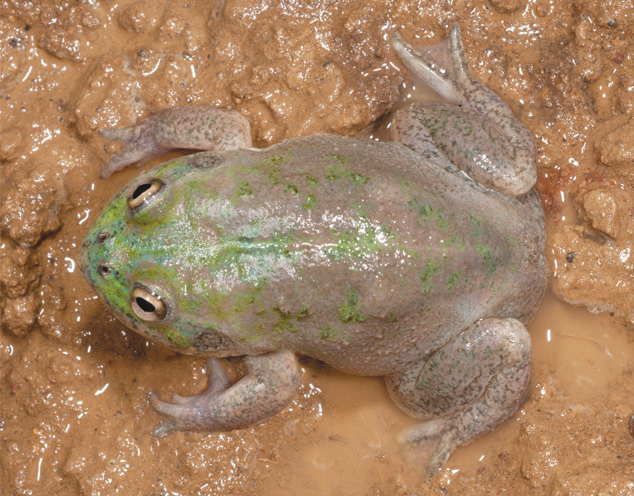
Native to Australia, the eastern water-holding frog (Cyclorana platycephala) can be found in western New South Wales, southern Queensland, north-eastern South Australia, and a few select spots within the Northern Territory. The western water-holding frog (Cyclorana occidentalis) in found inland and on the coast of Western Australia.
This unique amphibian makes its home within a wide variety of habitats including grasslands, temporary swamps, or pools after heavy rain periods, as well as wet scrub, forest, claypans, creeks and billabongs.
During the dry season, the water-holding frog spends its time hidden from sight, burrowed deep in the soil. When the summer rains arrive and water soaks down into the earth, the water holding frog is awoken from its slumber and makes it way to the surface to feed and breed. During their time above the ground, the water-holding frog hides under plant vegetation or rocks during the day and is active at night.
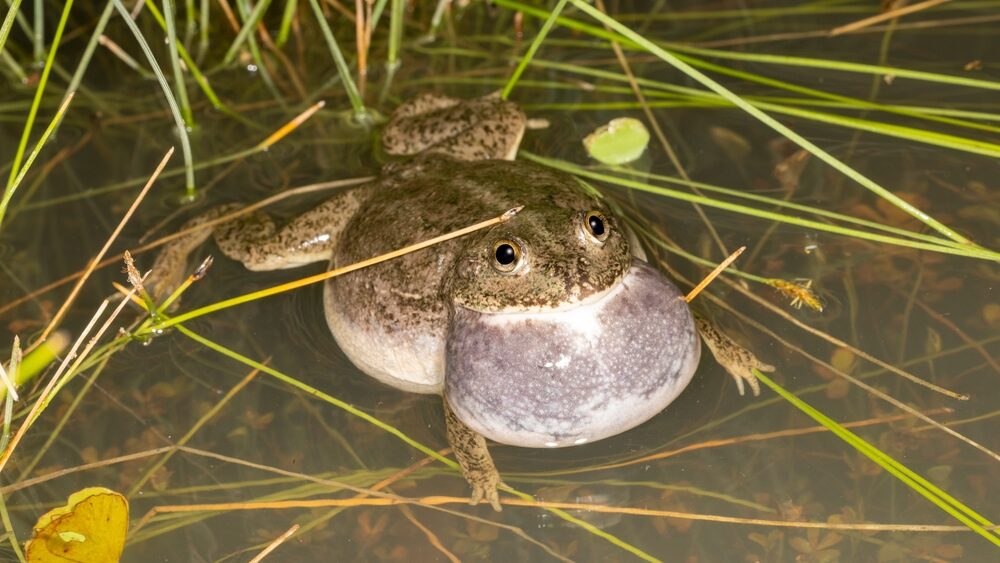
The water-holding frog takes full advantage of the short time it spends on land, eating a buffet of worms, insects, tadpoles, and other small frogs to build up energy and fat reserves as quickly as possible. It also absorbs half its body weight in water, storing it in its bladder and in pockets of its skin.
As well as filling its body with nutrients and H2O, the water-holding frog doesn’t waste time in finding a mate once it emerges from underground after the rains. The male’s distinct mating call sounds a bit like a motorbike starting with a long and low ‘maaaw-w-w,’ helps to attract a female frog. After mating, the female water-holding frog lays up to 500 eggs in a puddle. Once hatched, these large, golden tadpoles must then go through the cycle of metamorphosis and become froglets before the ground dries up again.
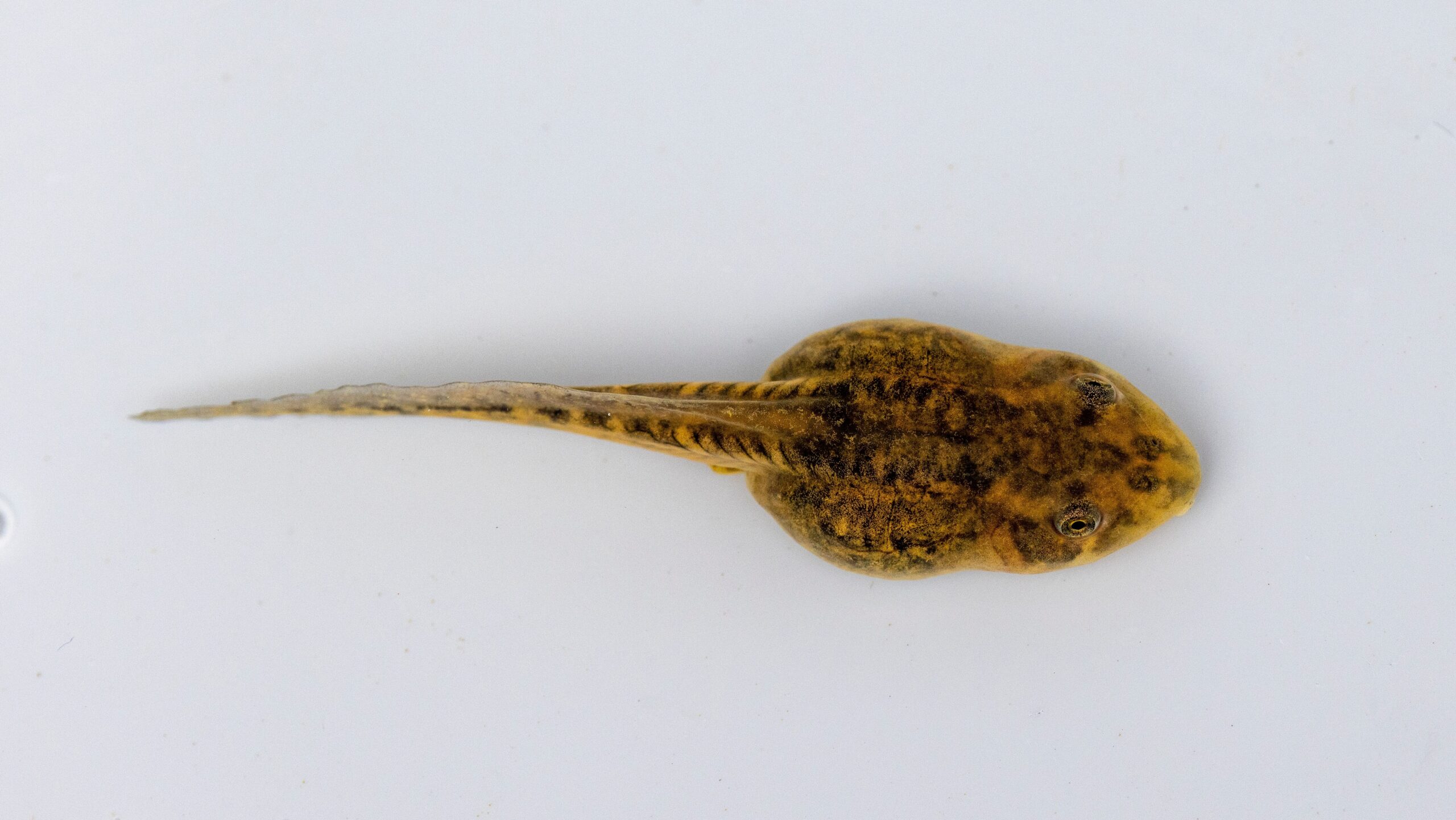
The water-holding frog goes to extreme measures to survive once the land begins to dry out, thanks to a process called aestivation. After the rains, when the environment is hot and dry, the frog will use its spade like feet to bury itself deep underground, where it then reduces its core metabolic rate and begins a period of hibernation.
This strange yet amazing adaptation sees the water-holding frog shed several layers of skin which it then uses to densely line the inside of its hole. This type of translucent, waterproof dead-skin cocoon helps the frog to maintain the water inside its body, allowing it to remain happily buried underground in its chamber for dry periods that may last years at a time.

